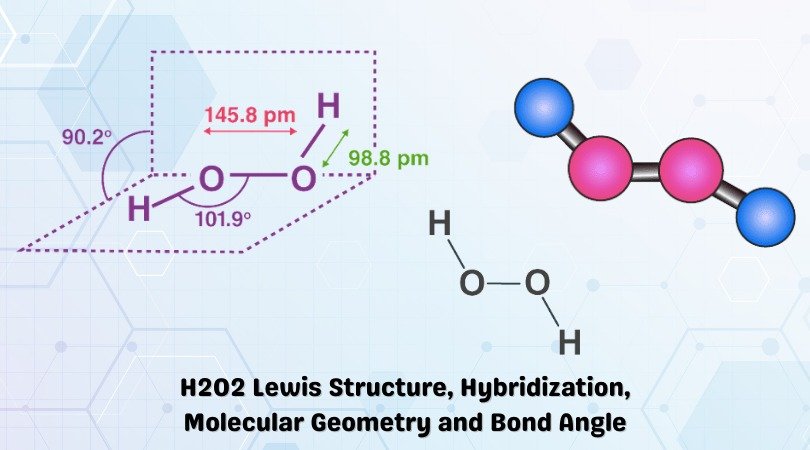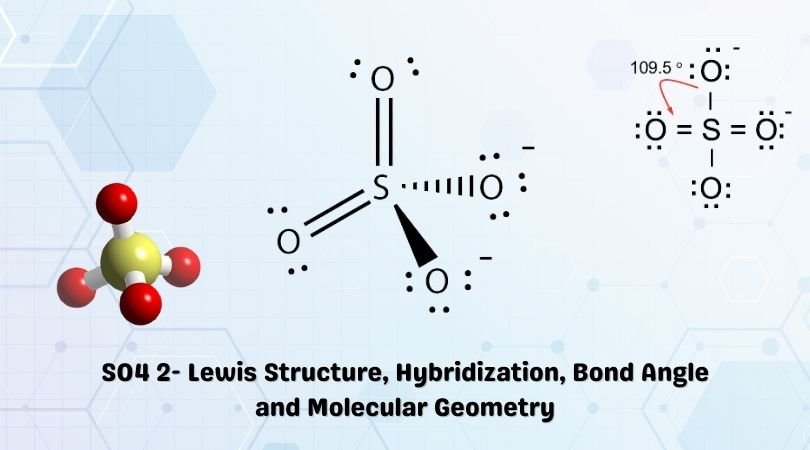The chemical formula NOCl represents Nitrosyl Chloride. It exists as a yellow-reddish gas which is very toxic and hazardous. As a component of aqua regia, it enhances the combustibility of metals.
As an electrophile, it acts as a Lewis acid to readily accept electron pairs. NOCl is used industrially as a critical component in the production of the Nylon-6 polymer. In the realm of organic synthesis, NOCl adds to alkenes and forms chlorine-based oxime compounds.
NOCl has also been used in the dissolving of platinum.
The compound has the following properties:
| Name of the molecule | Nitrosyl Chloride (NOCl) |
| No. of valence electrons | 6 + 2 x 6 = 18 valence electrons |
| Hybridization of the central atom | sp2 |
| Bond Angles | 113° |
| Molecular Geometry of NOCl | Bent Molecular Geometry |
This article will include other properties of NOCl such as its Lewis Structure, molecular geometry, bond angles, and its shape.
Contents
NOCl Valence Electrons
Nitrogen is in group 5 of the periodic table with the electronic configuration 1s22s22p3.
Therefore, the Nitrogen atom contributes 5 x 1 = 5 valence electrons
Being in group 7 of the periodic table, chlorine has seven valence electrons with a valency of -1. Chlorine’s electronic configuration is given by [Ne]3s23p5. The possibility of electrons in its d shell makes it hypervalent.
Therefore, the single Chlorine atom contributes 7 x 1 = 7 valence electrons.
Being in group 6 of the periodic table, Oxygen has six valence electrons and has a valency of -2. Oxygen’s electronic configuration is 1s22s22p4.
Therefore, a single Oxygen atom contributes 6 x 1 = 6 valence electrons.
Thus, the total number of valence electrons in Nitrosyl Chloride [NOCl] is given by:
5[N] + 6[O] + 7[Cl] = 18 valence electrons.
NOCl Lewis Structure
Oxygen is the most electronegative and cannot be placed in the centre of the skeletal structure.
This leaves us with the options of Chlorine-centric or Nitrogen-centric Lewis structures for Nitrosyl Chloride. We know that Chlorine has a valency of -1. This then means that Nitrogen is the least electronegative. Therefore, Nitrogen will act as the central atom in NOCl.
Therefore, Nitrogen will act as the central atom in NOCl.
We will now begin placing the 18 valence electrons available to us in accordance with the octet rule.
The electrons are first placed in between the atoms to form Nitrogen-Oxygen and Nitrogen-Chlorine bonds as shown in the figure.  The remaining valence electrons are filled in the outermost atoms, gradually moving inward. The electrons placed, satisfy the octet rule for Oxygen and Chlorine but not for Nitrogen, as shown in the figure.
The remaining valence electrons are filled in the outermost atoms, gradually moving inward. The electrons placed, satisfy the octet rule for Oxygen and Chlorine but not for Nitrogen, as shown in the figure.
Nitrogen has a lone pair around it, and it requires two more to complete its octet.
By calculating the formal charges for the above structure, we can obtain the most stable structure for NOCl.
It is observed that by forming a double bond between Oxygen and Nitrogen, the formal charges are closest to zero. This gives us the most stable Lewis structure for NOCl while also fulfilling the Nitrogen atom’s need for an octet.  Formal charges for an element/structure help determine its most stable Lewis Structure state. It is determined such that the elemental charge on each atom is closest to zero.
Formal charges for an element/structure help determine its most stable Lewis Structure state. It is determined such that the elemental charge on each atom is closest to zero.
FC = Valence Electrons – Non-bonding electrons – (Bonding electrons ÷ 2)
Formal charges for the structure are given below:
| Element | V | N | B/2 | FC |
| N | 5 | 2 | 6/2 | 0 |
| Cl | 7 | 6 | 2/2 | 0 |
| O | 6 | 4 | 4/2 | 0 |
Therefore, the Lewis structure of NOCl is given below as:
NOCl Hybridization
Nitrosyl Chloride comprises covalent bonds between Nitrogen, Oxygen, and Chlorine. Since there are three elements, there is no overall hybridization. However, the hybridization of the central atom is important and is often referred to.
Nitrogen in NOCl has a double bond with Oxygen, a single bond with Chlorine, and a lone pair. An easy method to determine the hybridization of an atom in an element is to observe the number of its electron regions or electron domains. Lone pairs and covalent bonds with other atoms contribute to being electron domains.
Nitrogen has two covalent bonds and one lone pair. This means that it has 3 electron domains. Therefore, it has a hybridization of sp2.
Oxygen has two lone pairs and a covalent bond with Nitrogen. Therefore, it has 3 electron domains and hybridization of sp2 as well.
Lastly, Chlorine has got three lone pairs and a covalent bond with the central atom, Nitrogen. Thus, it features 4 electron domains and hybridization of sp3.
As discussed, NOCl comprises three elements and has no overall hybridization. However, in this case, Nitrogen is the central atom, and it has a hybridization of sp2.
NOCl Bond Angles
According to the VSEPR theory, the covalent between atoms and Nitrogen’s lone pair repel each other. This gives NOCl a bond angle of 113°.

NOCl Molecular Geometry and Shape
As seen in the Lewis structure above, Nitrogen is the central atom of NOCl. It forms a double bond with Oxygen and possesses a lone pair of electrons. According to the VSEPR theory, the atoms of Oxygen and Chlorine repel each other.
In addition to this, the lone pair over Nitrogen creates an electron cloud which gives the structure a “bent” molecular geometry.
The shape or electron geometry is trigonal planar as all the components of the element are in the same plane.

CONCLUDING REMARKS
Let’s quickly summarize the salient features of NOCl
- NOCl consists of one Nitrogen atom, one Oxygen atom, and one Chlorine atom.
- In its most stable state, Nitrogen acts as the central atom and forms a double bond with Oxygen. It also possesses a lone pair and a covalent bond with Chlorine.
- Since there are three elements, NOCl has no overall hybridization. However, the hybridization of the central atom Nitrogen is sp2.
- NOCl has a bent molecular structure with bond angles of 113°.




